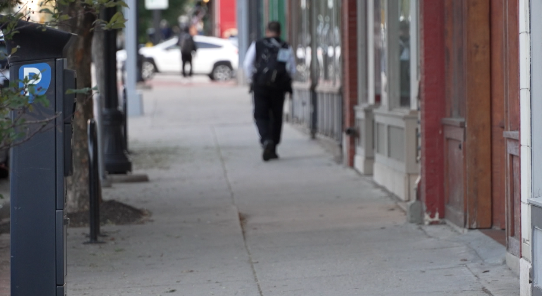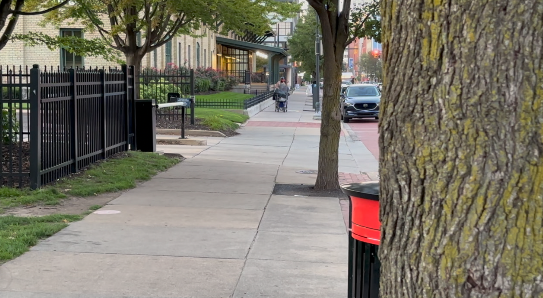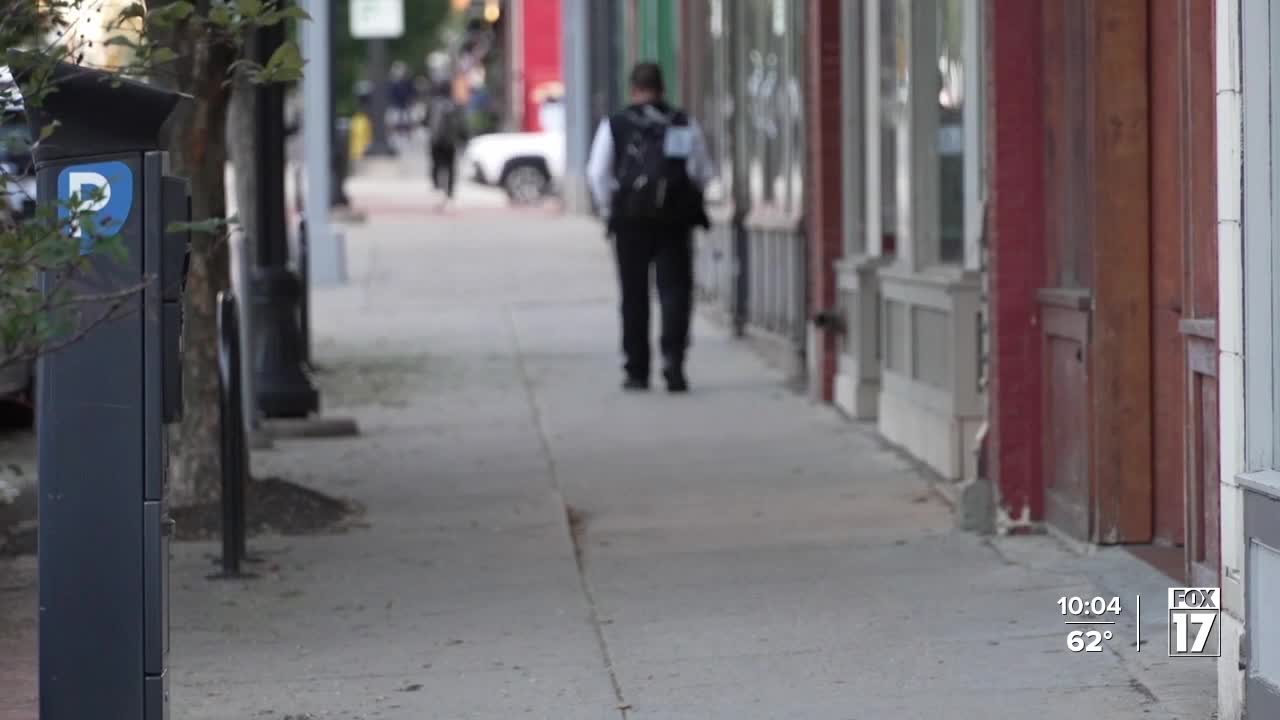GRAND RAPIDS, Mich. — Two years ago, Grand Rapids reworked how it interacts with the unhoused community. A three-pronged approach was rolled out: housing resources, supportive services, system improvements, and clarifying rules and requirements.
“People are coming into homelessness for a whole different set of issues,” Mel Trotter Ministries CEO Chris Palusky said on Monday.
He then shared a tough statistic: Mel Trotter Ministries has seen a 14% increase in the number of people they serve from last year.

“This is the tipping point, especially in Grand Rapids, that the community can tackle this very difficult issue,” Palusky said.
The nonprofit has developed different solutions, like tiny homes. The same goes for the City of Grand Rapids.
Nearly three years ago, I reported on how the Grand Rapids Chamber flagged the city due to safety issues downtown, as reported by chamber members.
In 2023, Grand Rapids reviewed its approach to balancing the needs of the unhoused community with community expectations. Soon after, new public health and safety ordinances were passed.

“I will tell you that since this ordinance was passed, I found that people seem to be getting the resources that they need. I've just seen less random stuff strewn about on the sidewalks like before this ordinance was passed,” Public Safety Committee Member Andrew Feikema said.
Officials outlined some progress Tuesday during the city's Public Safety Committee meeting.
Grand Rapids invested $500,000 into a housing outreach program. Over the last three years, through a public-private partnership, 95 people have transitioned into permanent housing.
“We are trying to get to the root cause and problem-solving,” Grand Rapids Deputy City Manager Kate Berens said.
The city has also stepped up enforcement, stopping people from sleeping in doorways.

“We have continued on the ethic of this being really an education campaign, an opportunity for people to understand what is allowed, what alternatives exist if you don't have a safe place to store personal property with a community partner,” Berens said.
City data shows the number of encampments cleaned up is down year over year.
“We like to think that is because we were able to connect folks to resources and educate folks about what was and wasn't allowed,” Berens said
In May, I highlighted the Grand Rapids area coalition to end homelessness. They recently achieved their goal of securing housing for 100 people. They had intended to complete it in 100 days, but it took longer than expected.






